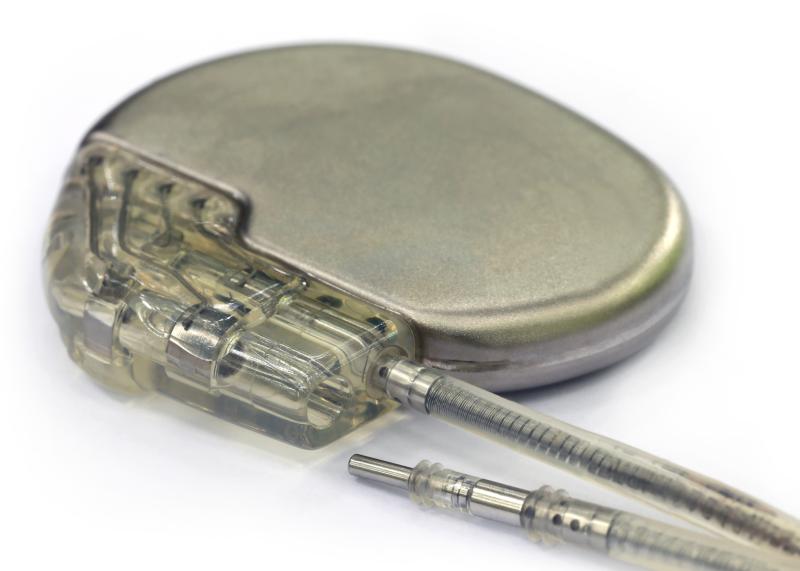Staphylococcus aureus bacteraemia tied to poor outcomes in patients with CIEDs




 Reutilising pacemakers can be an alternative for patients who cannot afford to get a new one.
Reutilising pacemakers can be an alternative for patients who cannot afford to get a new one.Staphylococcus aureus bacteraemia (SAB) worsens the prognosis in patients with cardiac implantable electronic devices (CIEDs), according to a recent study.
“One-third of patients died in hospital and less than 50 percent of SAB CIED patients survived beyond 1 year, irrespective of initial infective endocarditis diagnosis or not,” researchers said, however noting that among patients with good early outcomes and who were free of infective endocarditis, survival beyond 1 year was possible even without device extraction.
The study included 626 SAB patients, of whom 33 (5 percent) also had CIEDs. Those with implants were significantly older (83 vs 70 years; p=0.0001) and suffered from an elevated 30-day mortality rate (36 percent vs 20 percent; p=0.044). Infective endocarditis was also statistically more common among CIED patients (27 percent vs 7 percent; p=0.0006). [Infect Dis 2020;doi:10.1080/23744235.2020.1799070]
Of the 33 patients with both SAB and CIED, nine were eventually diagnosed with infective endocarditis. Twelve SAB CIED patients died within 30 days, yielding a mortality rate of 36 percent. By the 1-year time point, 58 percent (n=19) had already died, regardless of infective endocarditis diagnosis.
Of the 24 SAB CIED patients without infective endocarditis, six died within 2 days of blood culture collection. Only 17 survived beyond the very early phase, with 30-day and 1-year mortality rates of 12 percent and 35 percent, respectively.
Nineteen patients received intravenous antibiotics and survived until discharge. The median duration of treatment was 31 days in SAB CIED patients with infective endocarditis and 10 days in those without. Four patients underwent device extraction or explantation during intravenous administration.
The most common antibiotic used was cefotaxime, which was administered to 20 of the 33 SAB CIED patients. Thirteen patients switched to cloxacillin later on. Other empirical treatments given included piperacillin/tazobactam, cloxacillin, and meropenem. No patient received combination treatments.
A year after antibiotic initiation, 14 of the 33 SAB CIED patients were alive. Only one of these patients had device extraction, suggesting that keeping the device in was not an ultimate predictor of mortality.
“SAB carries a high risk of foreign body engagement subsequent to haematogenous bacterial seeding of biofilms, and removal of infected devices is a cornerstone of SAB management,” the researchers said.
“The most interesting finding in our study was that in SAB CIED patients without diagnosed infective endocarditis, discharged alive and surviving beyond 1 year, this favourable outcome was seen despite that CIED extraction/explantation was not undertaken,” they added.
Future studies, such as large-scale prospective cohort investigations, are needed to further validate these findings.